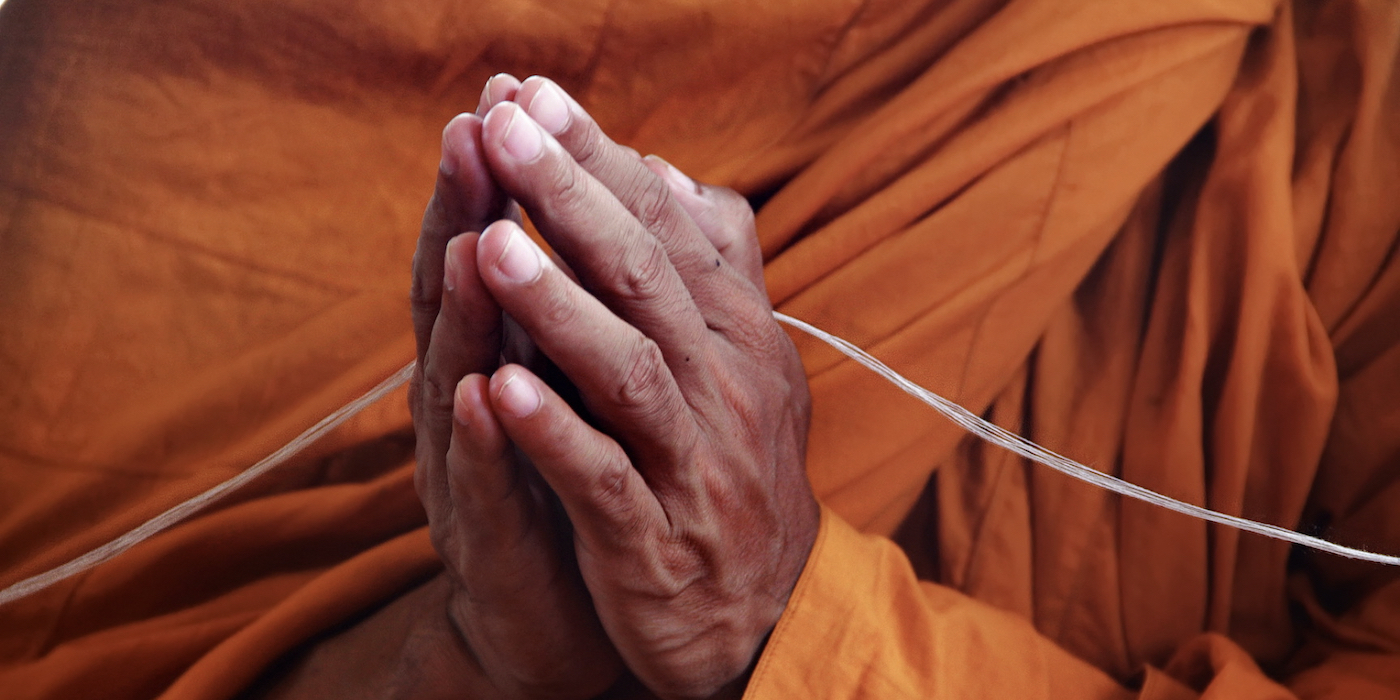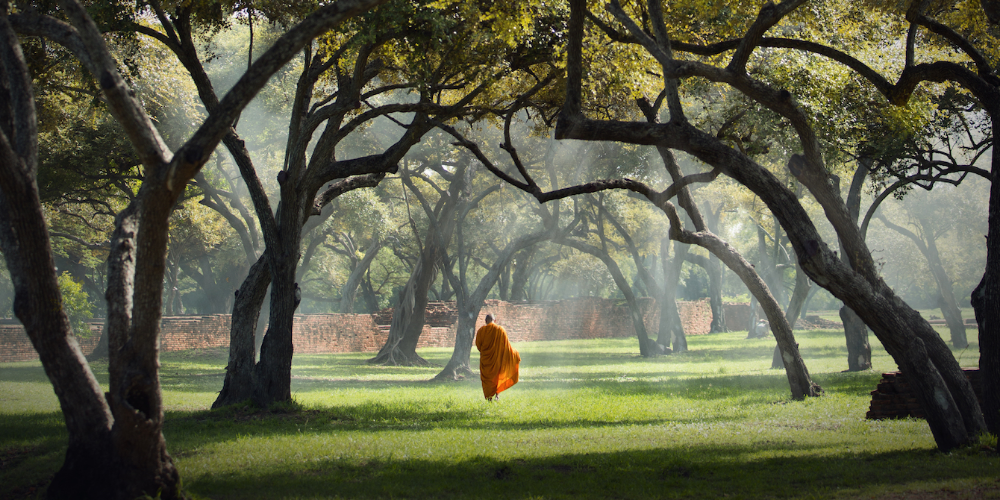Buddhism transcends the notion of religion, unfolding as a path of self-discovery and enlightenment. It’s not just about rituals or ancient scriptures — it’s a living practice that molds to the contours of modern life, offering solace and guidance. Embracing Buddhism today means embarking on a transformative journey towards mindfulness, compassion, and a profound connection with the world around us.
We’ll cover how Buddhism can be a beacon of light for navigating the complexities of life with wisdom and grace. Let’s dive into what it truly means to be a Buddhist in today’s world, where ancient wisdom meets modern challenges, and how it can guide us toward a life of deeper meaning and fulfillment.
Key takeaways
- Buddhism offers a path to enlightenment that integrates deeply into modern life, emphasizing mindfulness, compassion, and a connection with the world.
- The journey involves embracing core teachings like the Four Noble Truths and the Noble Eightfold Path, guiding us toward peace and fulfillment.
- Practicing Buddhism transforms daily living, encouraging us to act with kindness, live mindfully, and approach challenges with resilience.
- Community, or Sangha, plays a crucial role in supporting our spiritual growth, reminding us that we’re part of a broader journey of enlightenment.
Start your journey into Buddhism with this comprehensive course from Insight Timer.
The foundations of Buddhism
Buddhism is based on the teachings of Siddhartha Gautama, the Buddha or the Enlightened One. He found peace and spiritual awakening through his practice of what he called the “middle way.” This approach rejects asceticism, a common practice during Buddha’s time that was characterized by abstinence from various forms of worldly pleasures, often with the aim of pursuing spiritual goals.
Interesting, right? Learn more about the origins of Buddhism on our blog.
Dharma: Living with purpose
Dharma is about living in a way that is right and good, not just for us but for everyone around us. It’s about following the Buddha’s teachings to make the world a better place through our actions, thoughts, and words. By living according to Dharma, we aim to create a life that is harmonious, respectful, and full of compassion.
Karma: Our actions shape our world
Karma teaches us that everything we do has a result. It’s like saying, “What goes around comes around.” The Buddha taught us to think carefully about how we act, encouraging us to be kind and thoughtful and make positive choices that will lead to happiness for ourselves and others.
Samsara: Breaking the cycle
Samsara is the cycle of life, death, and rebirth that we’re all part of. It’s a concept that reminds us life is constantly changing, and it encourages us to seek a deeper understanding of life to find true peace and freedom from this cycle.
The Four Noble Truths and the Noble Eightfold Path: A journey to peace
The heart of Buddhism is found in the Four Noble Truths, which explain why we face difficulties and how we can overcome them. They were first described by the Buddha during his first sermon to a group of ascetics:
- Duhkha (Sanskrit for “suffering”): Suffering is a part of being a human being.
- Samudaya (Sanskrit for “origination”): Suffering comes from craving.
- Nirodha (Sanskrit for “cessation”): Freedom from suffering comes from nonattachment.
- Marga (Sanskrit for “the path”): Follow the Noble Eightfold Path, the “middle way,” to achieve enlightenment, or freedom from suffering.
The Noble Eightfold Path is a practical guide that teaches us how to live wisely and compassionately. It shows us the steps to take in our thoughts, actions, and words to lead a life that brings peace and joy to ourselves and the people around us:
- Right understanding
- Right intention
- Right speech
- Right action
- Right livelihood
- Right effort
- Right mindfulness
- Right concentration
“Right” in these Buddhist teachings means being truthful, kind, and present.
By embracing these fundamental teachings of Buddhism, we’re not just following ancient wisdom — we’re taking a path that enriches our lives and the lives of others every day.
It’s a journey that invites us to find balance, to live with intention, and to cultivate a spirit of kindness and understanding in everything we do.
What does a Buddhist believe?
Buddhists are guided by beliefs that encourage understanding, compassion, and mindfulness. Central to these are the Five Faculties of Buddhism, which are essential qualities that can be developed to lead a life of deeper insight and kindness. Let’s briefly explore each of these faculties.
- Faith (Saddha): This isn’t about blind belief but a trust in the path of Buddhism and its teachings. It’s the confidence that by following these teachings, we can find peace and understanding.
- Energy (Viriya): This is about putting effort into our practice and daily lives. It’s the drive to improve ourselves, to be kind, and to overcome challenges with a positive spirit.
- Mindfulness (Sati): Being mindful means being fully present in the moment, aware of our thoughts, feelings, and actions without judgment. It’s about living consciously and appreciating the here and now.
- Concentration (Samadhi): This is the ability to focus our mind deeply, whether in meditation or any activity, leading to greater clarity and calmness.
- Wisdom (Panna): Wisdom is the deep understanding that comes from practicing Buddhism. It’s seeing things as they truly are, leading to compassion and liberation from suffering.
By developing these faculties, Buddhists cultivate a balanced and meaningful life, guided by insight and compassion. Each faculty supports the others, creating a foundation for a journey of personal growth and enlightenment.
- Homage to the Buddha - Chanting with Music Ajahn Achalo 4:42
- Mantra Of Avalokiteshvara Long Ajahn Achalo 11:03
- Om Mani Padme Hung Mantra Of Compassion And Wisdom Ajahn Achalo 8:30
What do Buddhists do?
Embrace mindfulness and compassion
In Buddhism, actions and practices like mindfulness and compassion are central to daily life. These principles guide Buddhists in how they interact with the world, fostering a sense of presence and empathy.
The essence of mindfulness
Mindfulness means being fully present in the moment, aware of our surroundings, thoughts, and feelings without judgment. It’s about appreciating life as it unfolds, reducing stress, and enhancing well-being.
Cultivating compassion
Compassion involves recognizing others’ suffering and taking steps to alleviate it. It’s about kindness and empathy, motivating Buddhists to contribute positively to the world.
Meditation as a foundation
Meditation supports the growth of mindfulness and compassion. It teaches us to calm our minds, observe thoughts, and cultivate peace. This practice enriches our daily lives, encouraging a deeper connection with ourselves and others.
Dive deeper into how meditation nurtures mindfulness and compassion in Buddhism, check out our Mindfulness in Buddhism: Secular Meditation.
What is the ultimate goal of a Buddhist?
The ultimate goal of a Buddhist is to achieve enlightenment — a state of profound wisdom and understanding where suffering, desire, and self-delusion are transcended. This enlightenment, known as Nirvana, represents the liberation from the cycle of birth, death, and rebirth (Samsara), leading to a state of eternal peace and freedom.
Buddhists aim to cultivate qualities such as compassion, mindfulness, and wisdom in their journey towards this ultimate goal, striving to live in harmony with the principles of Dharma and to benefit all beings along the way.
Understanding karma and rebirth in Buddhism
In Buddhism, karma and rebirth are key ideas that explain life’s flow and how our actions affect us. Karma is like a spiritual cause and effect: what we do, say, or think shapes our future, both in this life and the next. It’s about the good or bad consequences of our actions. Rebirth is the belief that after we die, we come back to life in a new form.
How karma affects us
According to Buddhists, karma impacts our rebirths. Good actions lead to positive outcomes, making it more likely we’ll be reborn into better circumstances. On the other hand, negative actions can result in difficulties in this life or the next. Buddhists see this as a motivational reason to live kindly and make good choices.
By understanding karma, Buddhists aim to live in ways that bring happiness and reduce suffering, not just for themselves but for others too. It’s about creating a positive ripple effect with our actions, contributing to a better world and moving closer to enlightenment.
What makes someone a Buddhist?
Becoming a buddhist: Embracing the Three Jewels
To identify as a Buddhist, one embraces a special commitment by taking refuge in the Three Jewels: the Buddha, his teachings (the Dharma), and the supportive community (the Sangha).
- The Buddha: Admiring the Buddha as the Awakened one, the enlightened guide.
- The Dharma: Committing to understand and live by Buddha’s teachings.
- The Sangha: Valuing the community of fellow seekers for support and inspiration.
The essence of commitment
Embracing the Three Jewels signifies the start of a profound journey towards self-improvement and enlightenment. It’s about integrating Buddha’s wisdom into daily life, nurturing compassion, and seeking mindful awareness. This lifelong path is enriched by continuous learning and practicing in harmony with others on the same journey.
Explore the modern-day practice of Buddhism and discover how its ancient wisdom can illuminate your path today with our resources on Contemporary Buddhism.
How to integrate Buddhist principles into everyday life
Incorporating these practices can profoundly enrich your daily life and relationships, offering a serene approach to life’s inevitable highs and lows:
- Appreciate mindfulness in routine: Bring full attention to everyday tasks. Whether eating, walking, or cleaning, immerse yourself in the moment to foster awareness.
- Practice loving-kindness and compassion: Treat everyone with kindness, recognizing that each person faces their own struggles. Small gestures can significantly impact both others and your own well-being.
- Face challenges: When difficulties arise, stay calm and balanced. Remember that everything is temporary, which can help you remain composed and resilient.
- Reflect and meditate: Dedicate time for meditation to explore your inner thoughts and feelings, building patience and clarity.
- Learn from experiences: See every experience as a lesson. Every moment, whether good or bad, has something to teach about life’s impermanent nature.
Learn to incorporate Buddhist wisdom into everyday practices, read more about Buddha Nature: Reflection and Meditation.
Buddhist traditions and the role of community in Buddhism
Buddhism is diverse and spans across various cultures and regions. There are three primary schools of Buddhism: Theravada, Mahayana, and Vajrayana. Each tradition offers unique interpretations and practices based on Buddha’s teachings, yet all aim to end suffering and cultivate wisdom, ethical conduct, and mental discipline.
Theravada: The ancient way
Theravada, known as the “Teaching of the Elders,” focuses on individual enlightenment and monastic life, deeply rooted in the Pali Canon’s teachings. It’s widely practiced in countries like Sri Lanka, Laos, Myanmar (formerly Burma), and Thailand.
Mahayana: The universal path
Mahayana seeks to make enlightenment accessible to all, emphasizing the Bodhisattva’s altruistic quest for Buddhahood for the sake of all beings. This form is prevalent in China, Taiwan, Japan, Korea, and Mongolia, introducing a broad spectrum of sutras and philosophical texts.
Vajrayana: The esoteric path
Vajrayana, or Tibetan Buddhism, adds esoteric practices and rituals to the Mahayana foundation, aiming for rapid enlightenment. It’s known for its rich ritualistic traditions and the significant role of spiritual teachers or gurus. As its name suggests, Vajrayana is most commonly practiced in Tibet, and the areas surrounding it, Nepal and Bhutan.
Despite their differences, these traditions share the core goals of Buddhism, showcasing its universal appeal and adaptability.
The importance of sangha in Buddhism
In Buddhism, the community — or sangha — is essential for spiritual growth, providing support, wisdom, and encouragement. It fosters a sense of belonging, helping practitioners share their journey with those who understand and support their path.
Finding your Buddhist community
Being part of a sangha reminds practitioners that while the journey is personal, it’s also a shared experience. While Buddhism is more common in Asian cultures, that does not mean there are no Western communities. Here are some ways to find a Buddhist community:
- Local Buddhist centers: These are excellent places to start, offering teachings and group meditations.
- Online platforms: Apps like Insight Timer can connect you to a global community, making teachings accessible from anywhere. In fact, here are some of our groups focused on spiritual growth.
- Creating your own group: In areas where Buddhist resources are limited, forming a group with interested friends or family can be a valuable option.
Embarking on the Buddhist path is a deeply personal, evolving journey of learning Buddha’s teachings, finding community support, and growing in understanding and compassion. Insight Timer offers an extensive range of resources with over 200,000 free tracks, from guided meditations to insightful talks and courses, catering to everyone from beginners to those seeking to deepen their practice. Our platform connects you with experienced teachers and a worldwide community, helping you explore and grow in your Buddhist practice.
Dive into Buddhism’s diverse teachings and practices with Insight Timer and discover the ancient wisdom that can enrich your life today.
FAQs about being Buddhist
Do Buddhists believe in God?
Buddhism does not focus on the worship of a singular deity or god in the way many other religions do. It centers on the individual’s path to enlightenment, emphasizing personal experience and understanding over theistic belief.
Who do Buddhists pray to?
Buddhists may offer prayers or chants in respect to the Buddha, bodhisattvas, or enlightened beings, not as gods, but as inspirations and guides on the path to enlightenment.
Can Buddhists eat meat?
Buddhist practices regarding eating meat vary. Some Buddhists choose vegetarianism or veganism to avoid causing harm to sentient beings, while others may eat meat based on cultural practices or personal choice.
What do Buddhists believe about Jesus?
Buddhists generally regard Jesus as a wise and compassionate teacher. While Buddhism does not incorporate Jesus into its teachings, it respects the moral and ethical teachings he represents.
Do Buddhists believe in heaven?
Buddhism describes multiple heavens or realms of existence within its cosmology. However, these are not viewed as eternal dwelling places but as part of the cycle of Samsara that beings may pass through.
Do Buddhists have a Bible?
Buddhists do not have a “Bible” but have many sacred texts, such as the Sutras in Mahayana Buddhism and the Pali Canon in Theravada Buddhism, which contain the teachings of the Buddha.
Do Buddhists celebrate Christmas?
Buddhists may participate in cultural aspects of Christmas celebrations, but Christmas as a Christian holiday is not part of Buddhist religious practices.
What religion is closest to Buddhism?
Hinduism shares some historical and philosophical roots with Buddhism, including concepts like karma and meditation practices. Both originated in India, though they have developed distinct paths and teachings.
What is the 49 days after death in Buddhism?
The 49 days after death is a period observed in some Buddhist traditions, marking a transition phase for the deceased. It is believed that during this time, the consciousness prepares for rebirth, and rituals are performed to aid in a favorable rebirth.









